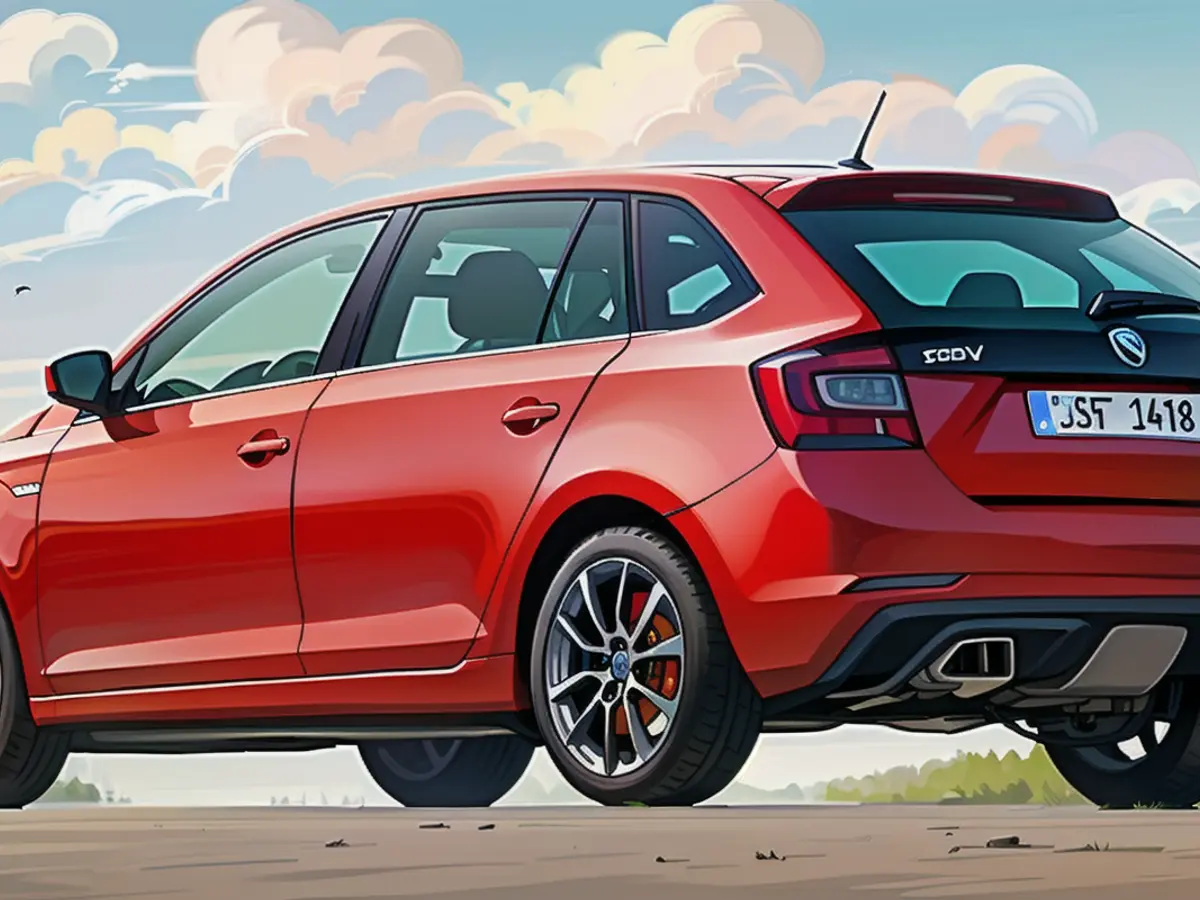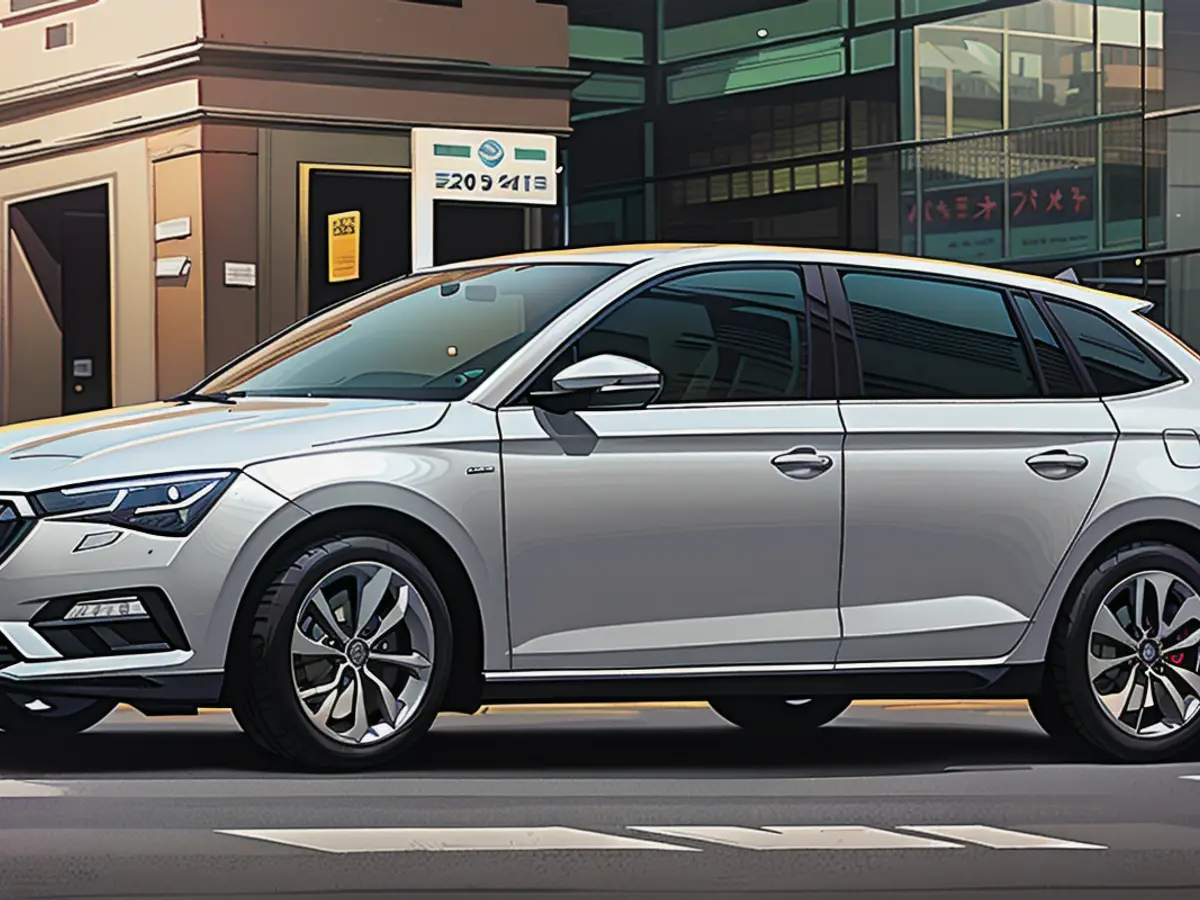Massive discrepancies in TÜV for Skoda Rapid and Scala sausage models
The Skoda Scala replaced the Skoda Rapid, and while their names are drastically different, so is their performance in the main inspection. The older model Rapid is lagging behind, earning it the nickname of "red lantern," while the newer Scala has excellent chances of success.
Both the Rapid and Scala were created on a small car platform, but they aspire to compete with the VW Golf within the Group. However, the Rapid fails to meet this standard, as seen in its poor performance in the general vehicle inspection (HU). The Scala, on the other hand, has a higher potential for winning, but like the Rapid, they both share one weakness.
Model History
The Skoda Rapid was introduced in 2012, with a facelift arriving in 2017. The update brought some modifications, including bi-xenon headlights, new aprons, and an improved infotainment system with internet services. In 2019, the Scala successor made its debut, featuring LED headlights as standard. It also received an expansion in its assistance systems and revisions to its look and three-cylinder engine during its 2023 facelift.
Body and Variants
The Skoda Rapid was available as a hatchback saloon and as a hatchback version called the Spaceback. The Scala, the successor to the Spaceback, is now available as a single hatchback version. However, in the meantime, it was introduced with a natural gas engine.
Dimensions (Per ADAC)
• Rapid: Hatchback - 4.48 meters x 1.71 meters x 1.46 meters (L x W x H), trunk capacity: 550 - 1490 liters• Spaceback: 4.30 meters x 1.71 meters x 1.46 meters (L x W x H), trunk capacity: 415 - 1381 liters• Scala: 4.36 meters x 1.79 meters x 1.47 meters (L x W x H), trunk capacity: 467 - 1410 liters
Strengths
The interiors of both models were praised for their spaciousness, and the Scala even offers "considerable" space. Both models excelled in the HU regarding the chassis, as did their axle suspensions, springs, dampers, indicators, and the function of their foot and parking brakes. The Rapid also had little to complain about.
Weaknesses
While the Scala had an "exemplary" overall score, it received slightly higher complaint rates for its dipped headlights and a high number of worn brake disks, which are also an issue with the predecessor.
However, the Rapid has several problems that negatively impact its performance in the compact class. Starting from the third general inspection, the remaining lighting components, apart from the indicators, fall below the average. After seven years and the third check, defects in the exhaust system arise, oil loss appears during the fourth inspection, and the first signs of rust on the chassis are visible.
Breakdown Behavior
The ADAC reported that these models from the Czech VW subsidiary require little technical assistance on the road, demonstrating their "good or very good reliability" according to their positions on the list.
Engines
The Rapid comes with a range of gasoline engines, including three and four-cylinder options with front-wheel drive, along with diesel options (three and four-cylinder and front-wheel drive). The Scala offers engines ranging from 70 kW/95 hp to 140 kW/190 hp and a natural gas engine (G-Tec, three-cylinder, front-wheel drive).
Dealer Sales Value (Deutsche Automobil Treuhand (DAT) with expected statutory kilometers - three price examples)
• Rapid 1.6 TDI Spaceback GreenLine (6/2014); 66 kW/90 PS (four-cylinder); 154,000 kilometers; 6,227 euros.• Scala 1.0 TGI G-Tec Style (6/2023); 66 kW/90 PS (three-cylinder); 24,000 kilometers; 17,879 euros.• Scala 1.0 TSI Active (6/2020); 85 kW/ 115 PS (three-cylinder); 47,000 kilometers; 13,329 euros.

Read also:
The ADAC conducts regular inspections, including the MOT, for both used Skoda Rapid and Scala models to ensure road safety. Despite the Skoda Scala outperforming its predecessor in the MOT, it still has higher complaint rates for certain features, such as dipped headlights and worn brake disks.
When considering used cars, potential buyers should be aware of the maintenance history of the Skoda models, as the Rapid often develops issues after a certain period, such as defective lighting components and exhaust system problems.
Source: www.ntv.de








